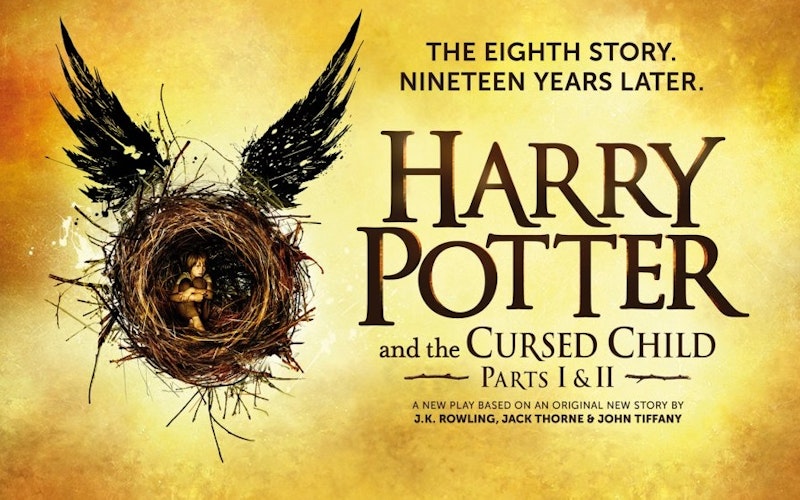
Culture At Large
The Individualist Leanings of Harry Potter and the Cursed Child
I’m going to come right out and say it: Harry Potter and the Cursed Child lacks the magic of J.K. Rowling’s novels.
The original books made up a deeply spiritual series about sacrifice, forgiveness, and redemption. By the time of the final installment, Harry Potter and the Deathly Hallows, Harry and his friends learn two familiar truths: that “where your treasure is, there your heart will be also” and that “the last enemy to be destroyed is death.” True, Scripture is not directly referenced in the novels, yet the series nevertheless invites readers to traverse through a land where hope exists in the face of great evil and where the central principles of the Gospel story are manifested.
The Cursed Child, however is not a story about sacrifice. It’s a story about individualism. Written by playwright Jack Thorne (in script format) and based on a story by Thorne, John Tiffany, and Rowling herself, it takes place several years after Hallows. He Who Must Not Be Named is long gone and Harry and friends have settled into their adult lives. Harry works at the Ministry of Magic (for Hermione). Ginny, his wife, is a sports reporter, and together they have three children. Harry struggles with the pressures of his job and the complications of fatherhood. His son Albus doesn’t much care for his father’s fame and thus has a hard time fitting in at Hogwarts. They don’t get along, a dynamic which incites the story’s action.
This is all fairly common stuff in the world of Harry Potter and, indeed, in YA fiction in general. But whereas the original stories surrounded a relatively simple narrative with the richness of the characters’ inner lives and a consistent moral order, Thorne’s version seems to simply be a cheap imitation of Rowling’s plot points and some witty attempts at Potter-isms. Alas, all he accomplishes is an approximation.
The world has enough stories about finding oneself.
While The Cursed Child centers its narrative on Albus’ personal striving, the earlier books understood that hope most profoundly comes in the form of sacrifice for the greater good—the kind of sacrifice that Harry made in Deathly Hallows. Light doesn’t shine easily in the darkest of times, but when good characters with great power offer themselves for the sake of others, it shines brightest.
This was the central idea of the original Potter books and the theme that made them resonate so richly with so many readers. This is a universal truth—one embodied in the life, death, and resurrection of Jesus—and many writers have attempted to manifest it. Rowling’s variation is so beloved because it incarnated this idea in an uncommonly powerful fashion.
Young Harry was consistently pointed towards a higher end, a purpose for which he existed. He and his friends were directed outward, towards the community at large and towards the work to be done. In The Cursed Child, however, the actions of the characters are driven by the desire to make a name for themselves. Albus is consumed not with his purpose, but with making his mark as a unique person. He is consumed not with defending his friends, but with escaping his heritage. And while he ultimately learns the value of friendship and family, the lesson seems tossed in at the end. It’s no longer the central, driving theme of the Potterverse.
The world has enough stories about finding oneself. What we need are more stories about being agents of hope. The original Potter books were just that, and thus they cast a spell on millions of readers who discovered that Harry and his friends offered a glimmer of light in a dark world. Of course, if there’s one thing our obsession with franchises has taught us, it’s that succession is difficult. That’s certainly the case with The Cursed Child.
Topics: Culture At Large, Arts & Leisure, Entertainment, Books